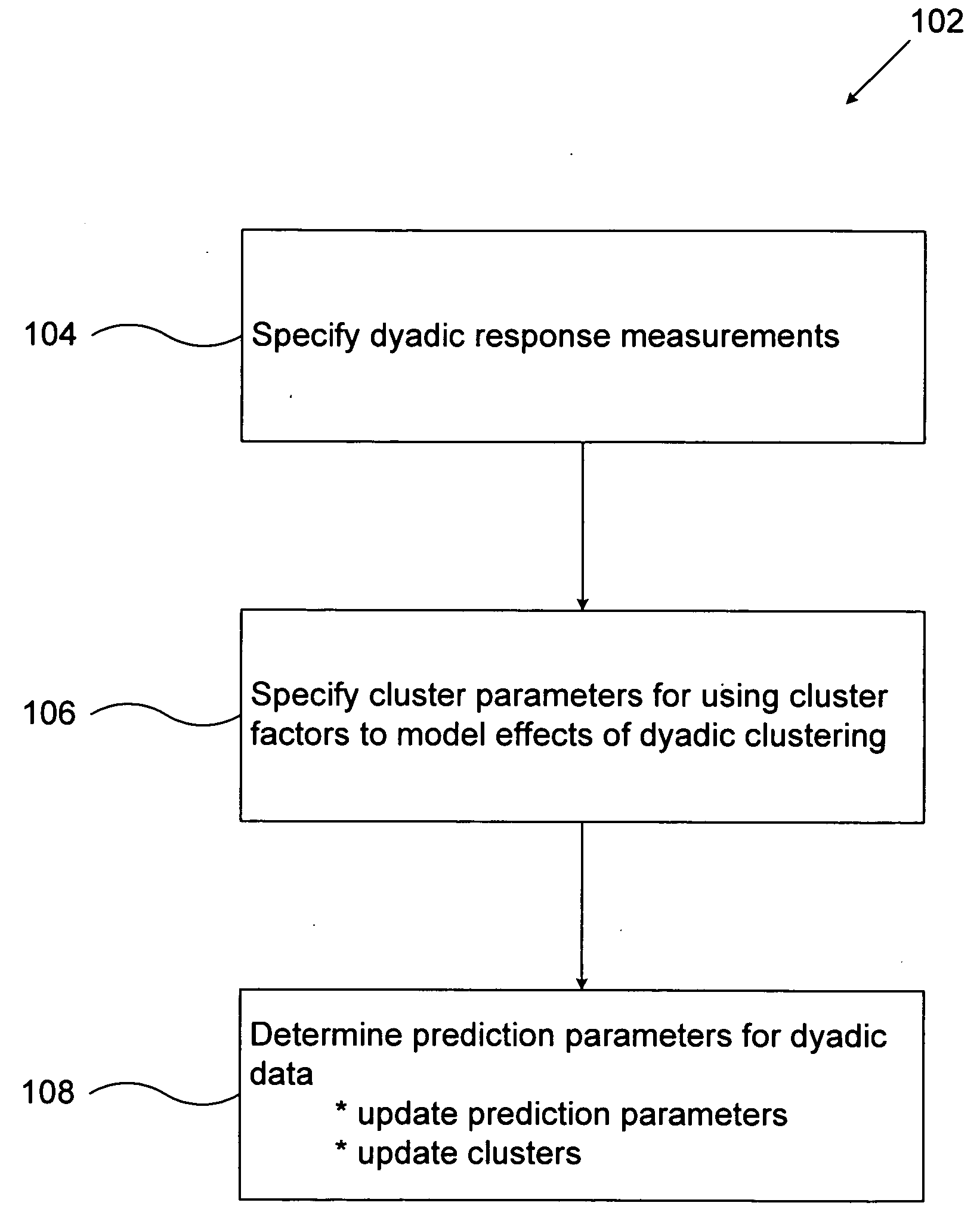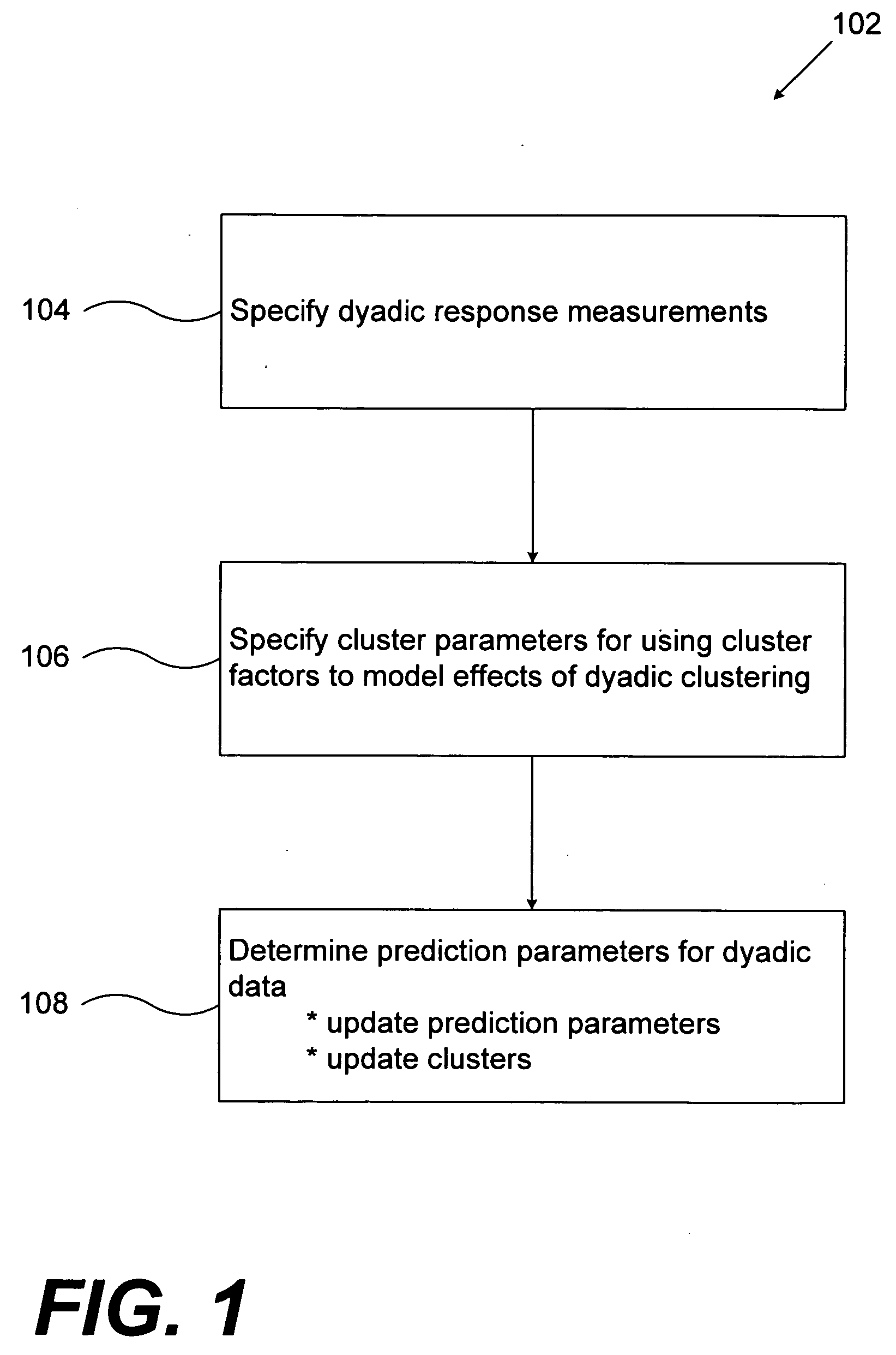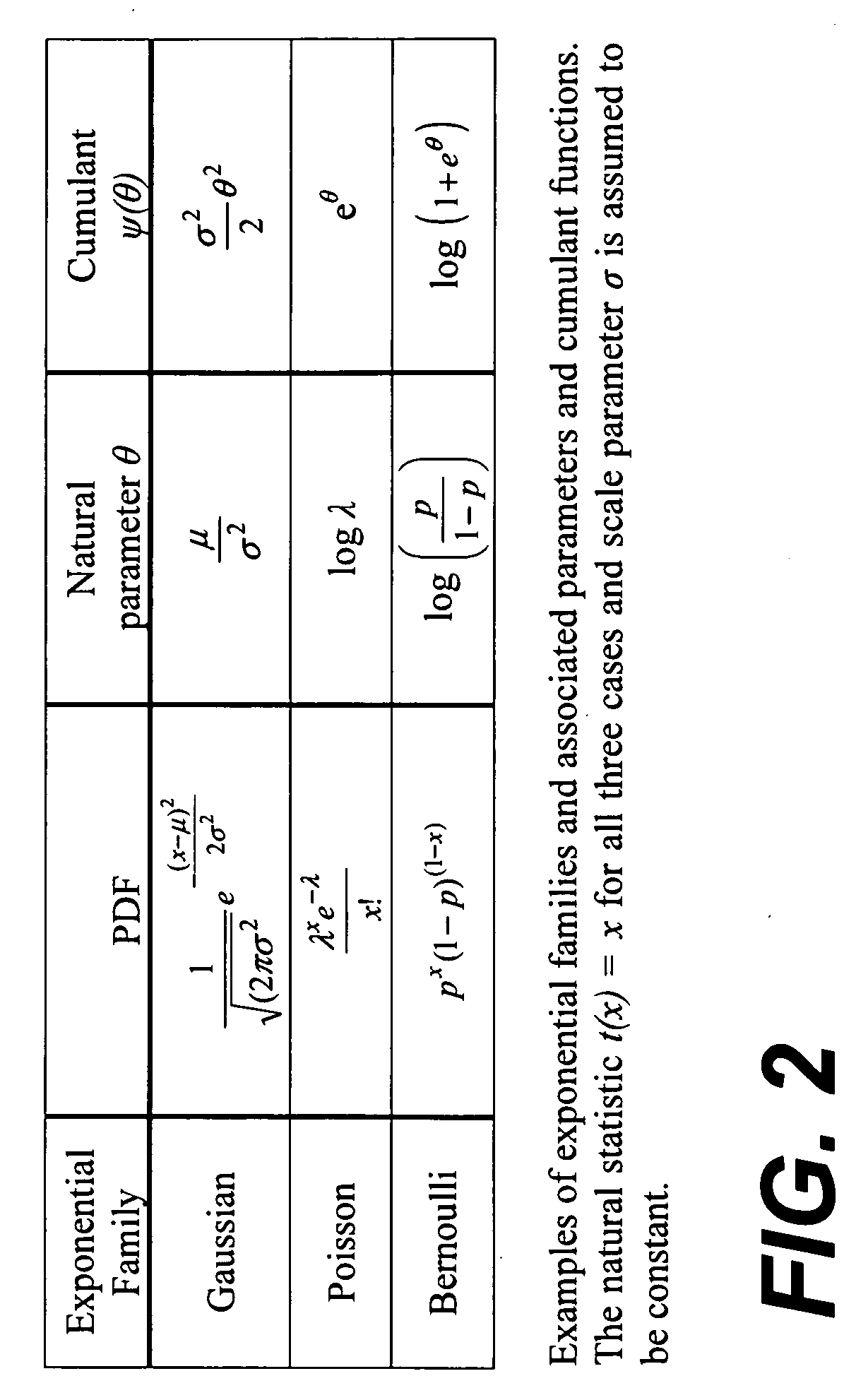Squashed matrix factorization for modeling incomplete dyadic data
a matrices and data technology, applied in the field of prediction modeling, can solve the problems of high incomplete matrices, inability to adopt computationally intensive approaches, and ineffective usual matrix approximation algorithms
- Summary
- Abstract
- Description
- Claims
- Application Information
AI Technical Summary
Benefits of technology
Problems solved by technology
Method used
Image
Examples
Embodiment Construction
1. Introduction
[0032]FIG. 1 shows a method 102 for predicting a response relationship between element of two sets according to an embodiment of the present invention. First, dyadic response measurements are specified for elements of the two sets 104. These measurements may include values for the response relationship being modeled as well as additional dyadic data that relates elements of the two sets. Next cluster parameters are specified for using cluster factors to model effects of dyadic clustering (e.g., grouping elements of the two sets) 106. These parameters may include weights for the measurements, numbers of allowed clusters for the two sets, and dimensions for cluster factors. Next prediction parameters are determined for predicting the response relationship between elements of the two sets 108. These prediction parameters may include statistical parameters for the underlying models, regression coefficients for fitting the measurements to the statistical models, and cluste...
PUM
 Login to View More
Login to View More Abstract
Description
Claims
Application Information
 Login to View More
Login to View More - R&D
- Intellectual Property
- Life Sciences
- Materials
- Tech Scout
- Unparalleled Data Quality
- Higher Quality Content
- 60% Fewer Hallucinations
Browse by: Latest US Patents, China's latest patents, Technical Efficacy Thesaurus, Application Domain, Technology Topic, Popular Technical Reports.
© 2025 PatSnap. All rights reserved.Legal|Privacy policy|Modern Slavery Act Transparency Statement|Sitemap|About US| Contact US: help@patsnap.com



